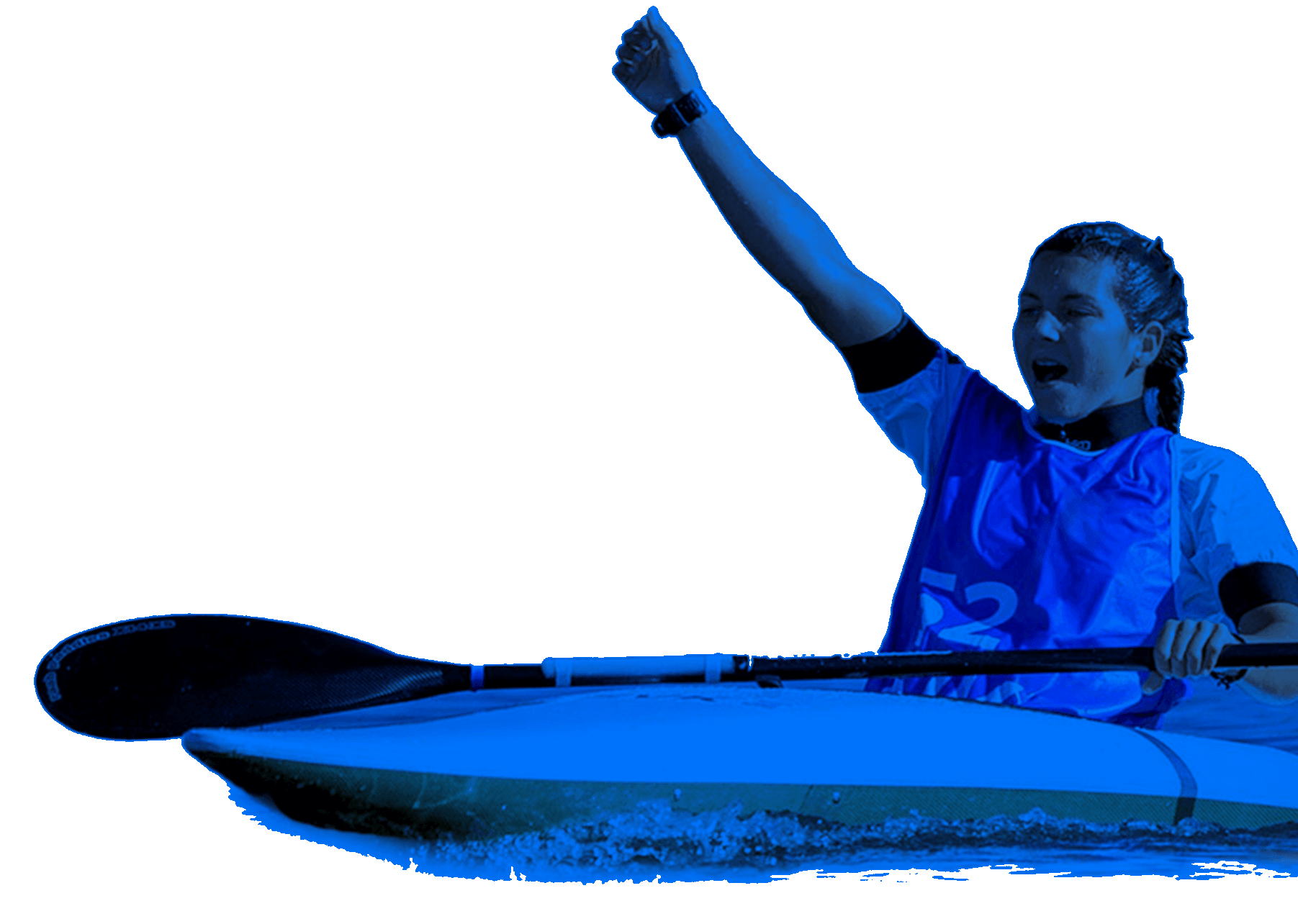Canoe slalom
In Canoe Slalom, competitors navigate on river rapids on a canoe or kayak, going through downstream or upstream gates, within the fastest possible time.





In this competition, spectators will see a dynamic time-trial race, that includes dominating several skills, leaving no space for mistakes in this thrilling competition



From the beginnings of manking, where there was water, there was am indigenous ship.
Most of them were shaped as a canoe. Primitive, but elegantly built, with a length from 3 to over 30 meters, canoes along history have been built with logs, animal skins and tree bark and have been used for basic transport, commerce and in some cases, war.
The design of the original canoe varied, in accordance with its use and the place where it was built. they were built with open barks, up to carved trees and 130-foot war canoes. On the contrary, kayaks were built to warrant that the frozen water from the Arctic did not enter the boat. They were manufactured by stretching animal skins over a wooden frame and in general, they could only transport one man each time.
The Kayak was probably originated in Greenland, where it was used by Eskimos, whereas the canoe was used all over the world. The word Kayak (Ki ak) which means "man-boat" in eskimo, was predominantly found in the northern parts of the world, North America, Siberia, and Greenland. They were ideal for individual transport and were used mainly for hunting and fishing.
The canoe on the other hand, was used in a wider scale. From the native american tribes to the Polynesians, the canoe showed a wider variety of sizes and uses, mainly tranport, commerce and war. Physically, the differences between the two boats are: kayaks are closed ships with a sitting hatch Athletes rwo from a sitting position with a double-bladed paddle. Canoes are actually boats that are rowed from a knee position with a single-blade paddle.
In this sport, the competition route is about 250 meters long and has 18 to 254 gates as a maximum, six or eight of them being lifts (ascent).
The downstream gates are green, while the lift gates are red. Competitors must pass between them without touching them. If the boat, the paddle or the athlete's body touches the doorpost, it will be penalized with two additional seconds to the athlete's time. If the athlete misses a door, 50 seconds will be added. The total time of the athlete's performance will be composed of the time in which the route is completed plus the times for sanctions.
Some courses have fast currents and facing them requires great energy, while others may have slower currents that involve more skill and maneuvers for the athlete. For this reason, athletes can compete in kayak or canoe.
In the kayak, the competitor is sitting, using a two-bladed paddle, which alternately paddles from side to side. In canoe, the athlete uses a single blade paddle, and sits on his bent knees, while stroking on his left or right side.
In canoe slalom there are levels to categorize the difficulty of navigating in the waters, do you know which ones and how many there are?
Check answerLevel I – Easy: Calm waters without any navigation difficulties. Flat or practically flat.
Level II – Small Difficulties: Little turbulent waters with currents, dams and rapids without difficulty.
Level III – Hard: Strong, fast currents that need some consideration. They demand mastery of the boat.
Level IV – Very Hard: For trained paddlers as it presents very turbulent waters, although predictable. There may also be waterfalls of some consideration.
Level V – Extremely Difficult. Dangerous: Only for perfectly trained and prepared paddlers. Very turbulent and unpredictable waters with eddies and dangerous waterfalls.
Level VI – Insurmountable: Without the possibility of navigation.
Chile is characterized by its aquatic landscapes. Our country is limited by the Pacific Ocean, and has great lakes and rivers, the last known worldwide for being one of the best for adventure sports. If you want to join canoe slalom we recommend you visit the page of the Chilean Canoeing Federation, where you will find all the affiliated clubs and their contacts. https://www.canotajechile.cl/clubesafiliados
Go back to sports